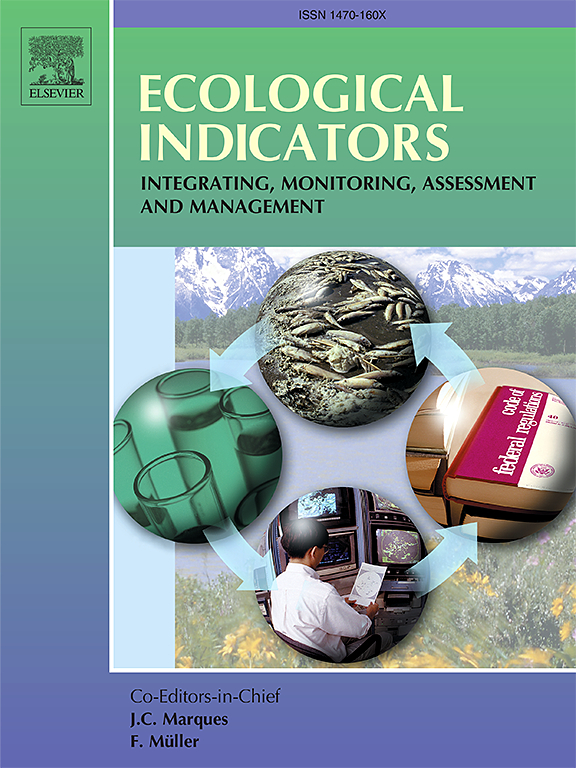Deciphering the impact mechanisms of cultural ecosystem benefits in urban green spaces: a site-scale analysis integrating environmental perceived characteristics and usage patterns
IF 7
2区 环境科学与生态学
Q1 ENVIRONMENTAL SCIENCES
引用次数: 0
Abstract
Urban green spaces (UGS) provide multiple cultural ecosystem benefits (CEB) that are crucial for urban residents’ wellbeing. However, our understanding of the mechanisms influencing CEB in UGS remains limited, affecting our ability to design spaces that provide optimal benefits. This study aims to investigate the mechanisms underlying CEB in UGS at the site scale, using Haizhu National Wetland Park in Guangzhou, China as a case study. We developed a theoretical framework integrating environmental physical characteristics (EPHCs), environmental perceived characteristics (EPECs), and UGS usage patterns as mediating variables between environmental spaces and CEB. A cross-sectional study was conducted using a population sample (n = 1,451) through Public Participation GIS (PPGIS). Results showed that: (1) EPHCs significantly influenced CEB through both direct and indirect pathways mediated by EPECs and UGS usage; (2) Different dimensions of site characteristics affected CEB through distinct mechanisms − EPHCs primarily influenced CEB through visit frequency, while EPECs operated through both parallel mediation (via sociability, coherence, and openness) and serial mediation (through coherence/openness and visit frequency); (3) The impact mechanisms varied significantly across socio-demographic and activity types. Our findings extend the UK NEA’s CEB framework by empirically validating the mediating roles of environmental perception and usage patterns. This study provides evidence-based guidance for UGS design and management to enhance CEB delivery in densely populated urban areas.

解读城市绿地中文化生态效益的影响机制:综合环境感知特征和使用模式的场地尺度分析
城市绿地(UGS)提供多种文化生态系统效益(CEB),这对城市居民的福祉至关重要。然而,我们对UGS中影响CEB的机制的理解仍然有限,这影响了我们设计提供最佳效益的空间的能力。本研究以广州海珠国家湿地公园为研究对象,在地域尺度上探讨UGS中CEB发生的机制。我们开发了一个理论框架,将环境物理特征(EPHCs)、环境感知特征(EPECs)和UGS使用模式作为环境空间和CEB之间的中介变量。通过公众参与地理信息系统(PPGIS)对人口样本(n = 1451)进行了横断面研究。结果表明:(1)EPECs和UGS的使用通过直接和间接途径显著影响CEB;(2)不同维度的站点特征通过不同的机制影响CEB,其中,以环境为中心的站点特征主要通过访问频率影响CEB,而环境为中心的站点特征通过平行中介(通过社交性、一致性和开放性)和串行中介(通过一致性/开放性和访问频率)作用;(3)不同社会人口和活动类型的影响机制存在显著差异。我们的研究结果通过实证验证环境感知和使用模式的中介作用,扩展了英国国家环境局的CEB框架。本研究为UGS的设计和管理提供了循证指导,以加强在人口密集的城市地区提供CEB。
本文章由计算机程序翻译,如有差异,请以英文原文为准。
求助全文
约1分钟内获得全文
求助全文
来源期刊

Ecological Indicators
环境科学-环境科学
CiteScore
11.80
自引率
8.70%
发文量
1163
审稿时长
78 days
期刊介绍:
The ultimate aim of Ecological Indicators is to integrate the monitoring and assessment of ecological and environmental indicators with management practices. The journal provides a forum for the discussion of the applied scientific development and review of traditional indicator approaches as well as for theoretical, modelling and quantitative applications such as index development. Research into the following areas will be published.
• All aspects of ecological and environmental indicators and indices.
• New indicators, and new approaches and methods for indicator development, testing and use.
• Development and modelling of indices, e.g. application of indicator suites across multiple scales and resources.
• Analysis and research of resource, system- and scale-specific indicators.
• Methods for integration of social and other valuation metrics for the production of scientifically rigorous and politically-relevant assessments using indicator-based monitoring and assessment programs.
• How research indicators can be transformed into direct application for management purposes.
• Broader assessment objectives and methods, e.g. biodiversity, biological integrity, and sustainability, through the use of indicators.
• Resource-specific indicators such as landscape, agroecosystems, forests, wetlands, etc.
 求助内容:
求助内容: 应助结果提醒方式:
应助结果提醒方式:


